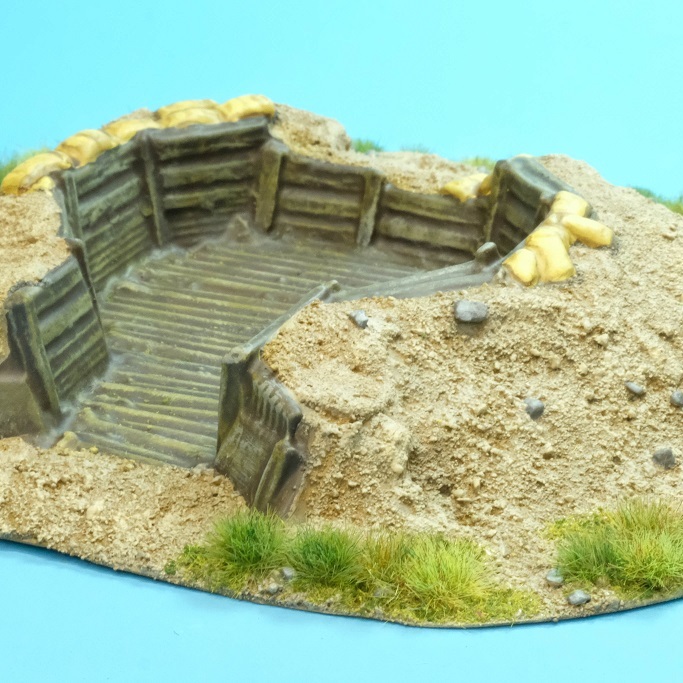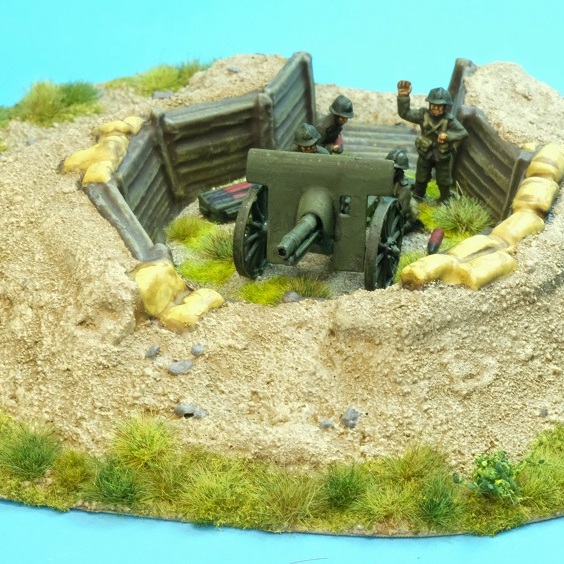Like many others, I was spurred by the recent anniversary of Fall Gelb to put together a number of French AFVs for 1940. Except, of course, these won’t be facing Stukas and panzers. As if the title wasn’t enough of a hint!
First up is the only tank to have seen service in the colony pre-1945, the venerable FT17. This particular beast was actually begun in 2015 and was retrieved from the drawer of half-finished models with its original basecoat of Vallejo Golden Olive, Buff, and Flat Earth (more on the scheme later) more or less intact. A quick build kit from Early War Miniatures, I remember it being an absolute delight to put together thanks to the excellent mould quality.
The FT17s fielded in Indochina were painted a boring plain green, but this was information I did not find out till the publication of issues 116 and 117 of GBM Magazine a year after I had commenced work on my tanks. The sources I had at the time, sparse as they were, suggested quite the opposite: a 1938 newsreel footage taken in the French concession of Hankou, for example, provided me a perfectly reasonable excuse to go for something substantively more colourful (bearing also in mind that the tanks stationed in China apparently ended up being transferred to Indochina, albeit after the war with the Thais). Hence the camo, which is of Great War vintage for the simple reason that I copied it off the box cover art of a Takom kit.
This second FT17 is a plastic First to Fight kit and sports a two-tone scheme based on a profile of the tank in the lavishly illustrated 5ème Etranger: Historique du régiment du Tonkin. Being 1/72 it is a tad larger than its EWM counterpart, though this size difference is surprisingly negligible even when viewed close up. Note to self: the tracks started with a basecoat of Vallejo Black and was followed by successive drybrushes of London Grey, German Grey, London Grey, and US Tankcrew Highlight.
One reason why the FT17s were shelved midway through painting was the 20mm market’s distinct lack of appropriate kits to flesh out the rest of the unit. For a colony so under-armoured it’s quite bewildering how unique many of the vehicles it was allotted were. One was an upgunned modification of the ubiquitous Renault UE “chenilette”, a running example of which is kept at the Thai cavalry museum. Although wargamer-friendly versions of the standard carrier are available from three different 20mm makers, any one of which would have adequately served as the basis for a conversion, I did not possess the mad skills of João Pedro Peixoto to scratchbuild an entirely new casemate.
Then 2019 came along and out came a new release from Chinese company S-Model, which I readily snapped up once it appeared on ebay. And like waiting for the bus, six months later another model was put out by Early War Miniatures. C’est la guerre, as they say.

The chenilette comes two to a box and were a bit fiddly to build, with the machine gun’s fragility requiring extra care in severing it from the sprue. Being based on the version exported to China the cupola is incorrect for French usage unless internet reports that a few were confiscated by the Indochina government are to believed. So rather than follow the colours suggested in the aforementioned GBM issue, I opted instead for the one provided to the Chinese, which I shamelessly copied from a scale modeller. Like the rest of the vehicles featured in the post, the green was derived from a 1:1 mix of Tamiya Yellow Green and Tamiya Olive Green. A colour very much similar to that used by my references, though in hindsight I should have used Tamiya Nato Green for a greener hue.
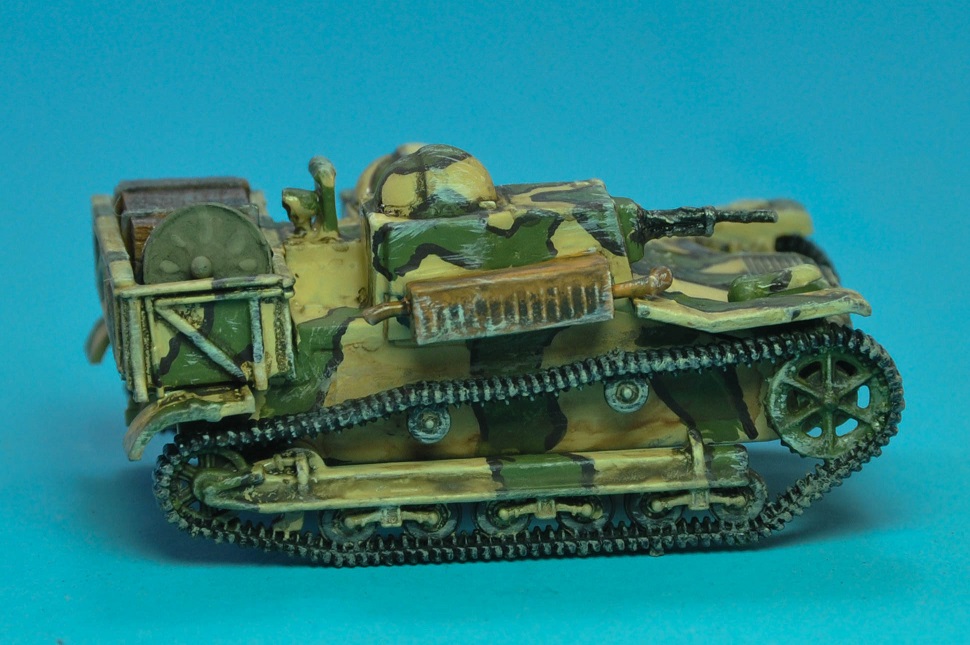
To bring out the rivets and panel lines I relied on AK Interactive’s Afrika Korps wash. Yet another poor choice given the small size of the vehicle, one that overly accentuated the darkening effect of the Vallejo German Camo Black Brown I had used to outline the stripes. To offset this disaster I took a leaf out of Just Needs Varnish John’s notebook by drybrushing the entire vehicle with Vallejo Buff. This in turn created more problems than it solved, lending the UE an off-putting greyness that convinced me to forgo this last drybrush on the other vehicles seen here. Drybrushing skills I clearly have not.
The next vehicle is one specific to Indochina, namely the “Colonies” version of the famous Panhard armoured car. While a conversion kit is available from French cottage firm Minitracks, I was gripped by a sense of adventure and determined instead to sample a 3d-printed model from Shapeways on the strength of their repeated appearance on Just Needs Varnish.
And what a choice it was! Whatever doubts I had about the technology evaporated the very instant I unpacked my parcel. The model required neither clean-up nor assembly, and is made of a very nice material that feels sturdy to hold.
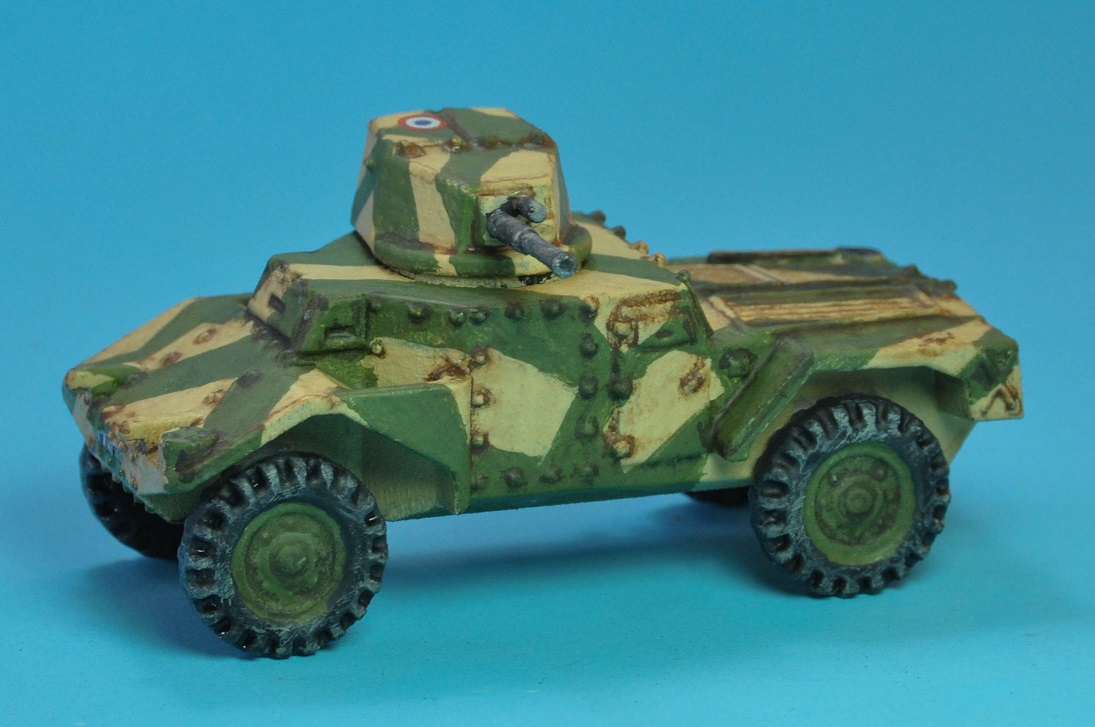
The camouflage pattern was provided by a modeller’s sterling Franco-Thai War diorama in 1/35 scale. This is very much a variation on the colour profile available in Trackstory no.14 and recycled in issue 117 of GBM Magazine, itself conjectural in the sense that it is based on turretless vehicles captured by the Germans. But conjectural was good enough for me as the angular scheme differed nicely with the usual Gallic aesthetic one usually sees on French AFVs.
The defenders of Indochina also had access to the Citroen Kegresse P104, an utterly wonderful oddity of the interwar era that provided a wonderful relief from the usual green-and-tan which you, dear reader, will have become accustomed to by now.

I did for a brief moment consider procuring the model Retrokit released in early 2019, but the prospect of sawing thin, delicate fenders off chunks of thick resin evoked feelings of Lovecraftian dread that very quickly disabused me of the notion. It was at this point that Just Needs Varnish John, kind man that he is, stepped in to alert me of the halftrack’s availability on Shapeways.
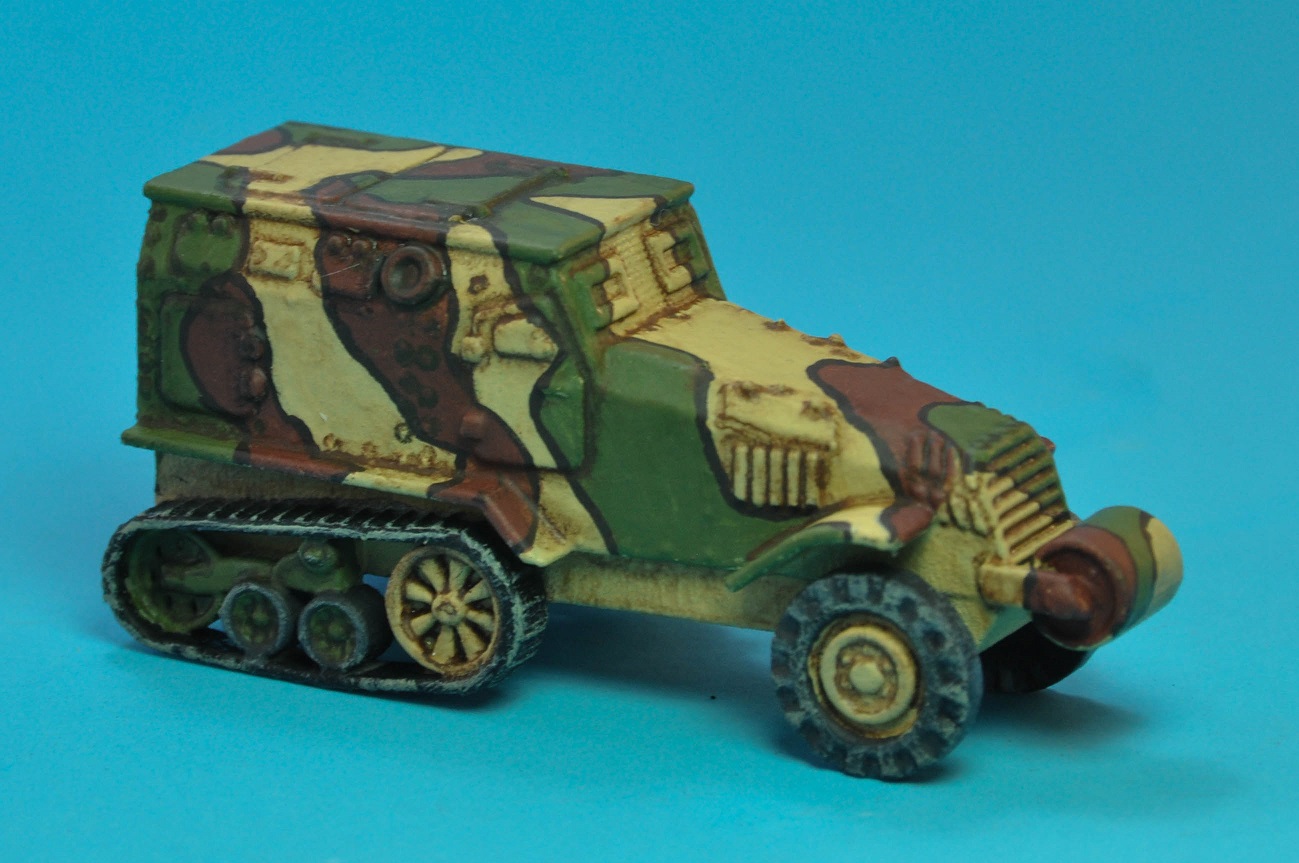
A lovely one-piece print it is too. In painting the model I drew inspiration from two sources, namely the cover of Trackstory no. 12 and a scratchbuilt 1/72 model — the eagle-eyed among you will have noticed that both depict the turreted version that patrolled Equatorial Africa. Colours employed were Vallejo Buff, an equal mix of Tamiya Yellow Green and Olive Green, and Vallejo Mahogany Brown. The wheels were basecoated with Vallejo Dark Rubber, washed with Army Painter Dark Tone, and drybrushed with Vallejo US Tank Crew Highlight. And yes, the rear wheels should have been black, but certain concessions to coolness needed to be made.
Finally, there’s the White Laffly AM50 which the motorised detachments of Indochina were amply supplied with. A charming but antiquated WWI design that was outclassed by every other armoured fighting vehicle in Europe but which was good enough for putting down peasant uprisings.

For a vehicle that saw such extended service throughout the French empire it is pretty shocking that the only 20mm model of this armoured car is a resin kit from Wespe. Having no advanced modelling skills I opted instead for the next best thing, which is the Laffly-White armoured car from the Raventhorpe Ready to Roll range available on the Rapid Fire! site. Unlike the rest of their output this particular three-piece kit is something of an enigma, more mimicry than replica, with its most otherworldly (i.e. inaccurate) feature being the turret.
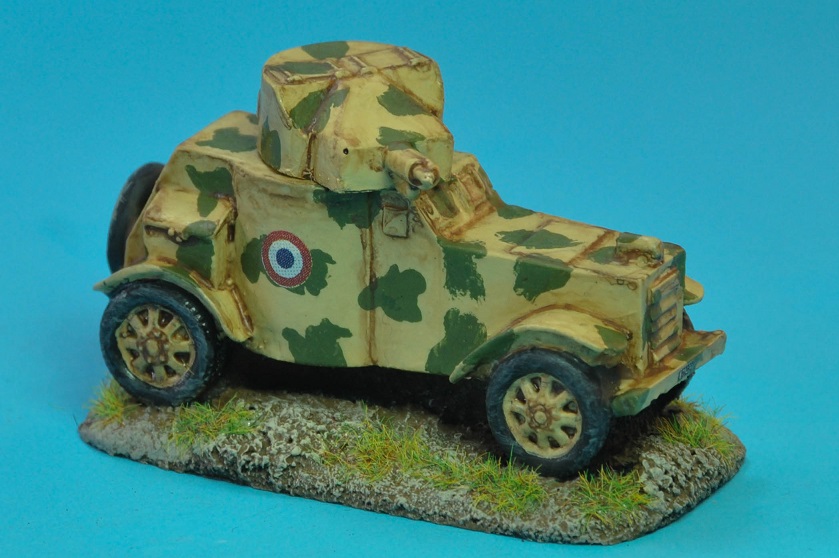
In this case the designer’s lax commitment to accuracy is mirrored by my own, for the Laffly Whites in Indochina were monochrome like that colony’s tanks. Needless to say, I found this despicably dull and so settled on a scheme more appropriate to the Sahara, copying yet another scale modeller who had been kind enough to figure out an appropriate scheme.
With the easing of lockdown restrictions it’s anyone’s guess whether I will be able to finish the softskins and motorcycles in a timely manner. But wish me luck!


